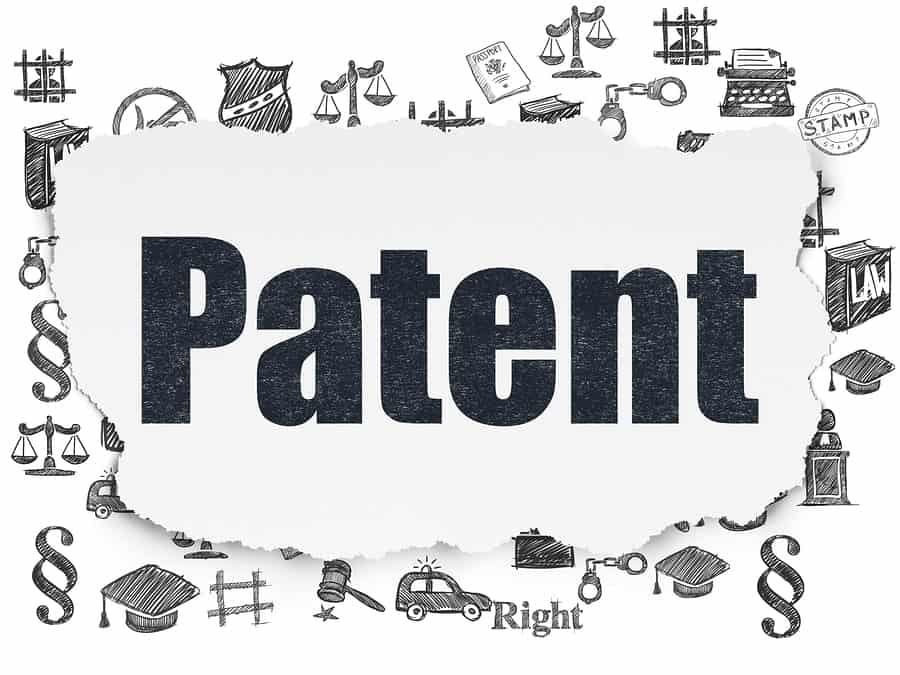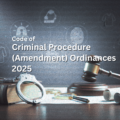Introduction:
Bangladesh adopted a National Innovation Policy in 2018.1 Unfortunately, the Policy has been unable to promote innovation so far. Evidently, Bangladesh has regularly been ranking at the bottom for innovation even after adopting such a policy. According to the Global Innovation Index 2023 published by the World Intellectual Property Organisation (WIPO), Bangladesh ranks 105th among 132 countries for innovation.2 It also ranks 22nd among lower-middle income category countries and 7th among South Asia countries.3 Compared to the ranking in other years, it seems that Bangladesh has been lagging behind regularly in respect of innovation.4 Moreover, in pursuance of such policy, some Intellectual Property (IP) laws have been made so far to promote innovation and creativity. Bangladesh Patent Act, 2023 is one of them which has been enacted replacing its immediate predecessor Bangladesh Patent Act, 2022. In this piece, I analyze the relevant portion of BPA 2023 to answer the question of whether the current patent law can promote innovation in Bangladesh. As a part of the analysis, some loopholes and challenges have been identified which must be eradicated. The article concludes that the current patent regime is creeping towards innovation but some reforms are needed to fulfil its entire objective.
Legal framework for promoting innovations:
The Paris Convention for the Protection of Industrial Property, 1883 (Paris Convention) is the key instrument that deals with patent rights. Bangladesh became the party of the convention through accession on November 29, 1990.5 The Convention enshrines many principles like the national treatment principle (NT), territorial protection principle, etc and contains many rights for patent owners and users. TRIPS Agreement is another significant convention which gives rights to the patent owner. Both conventions discourage unfair competition and encourage innovation. Thus, A right holder has the right to prevent anyone from manufacturing, selling, importing or using his invention without his license. To prevent unfair competition and misuse of the exclusive rights of the owner, there are also some exceptions. Bangladesh followed these two conventions at the time of drafting its patent law. Bangladesh had a patent regime under the Patents and Designs Act,1911. Recently, this age-old law was replaced by the Bangladesh Patent Act, 2022. However, the new Act was also further replaced by the Bangladesh Patents Act, 2023 (BPA 2023). It is very surprising to enact a new law within a year.
Requirements for patentability:
BPA 2023 does not describe the requirements for the patentability of an invention which were previously enumerated in section 3 of the BPA 2022. Novelty, inventive step and industrial applicability are the three quintessential requirements of claiming a patent right. Article 27 of the TRIPS Agreement categorically mentioned these three essentials. Now, a question may arise as to whether these requirements are obsolete or inapplicable due to their non-inclusion in the new Act. The clear answer is ‘no’ in my view. Because it has become a customary practice in many countries to provide patents based on these 3 essentials. Besides, the TRIPS Agreement obliges the member parties to provide patents subject to normal tests of novelty, inventive step and industrial applicability.6 So, these requirements should obviously be met to get patent protection. However, the Act should have included these requirements clearly. It is unknown why the legislature omitted these essentials. It seems to me that the legislature negligently omitted such requirements because of passing the new Act hastily.
Nature & duration of patent rights:
Both the product and process of making such a product can be protected as patents. The right of a patent owner exists for 20 years.7 Afterwards, the invention is made publicly available. It means that after 20 years, the product or process can be used, sold or exploited by any other means without the license of the owner. New enterprises thus get the opportunity to use the process to innovate any product or device or significant development of the existing products.8 It encourages small and medium entrepreneurs (SMEs) to innovate products or processes even if minor development to such products. However, the trade secret can be protected even after the expiration of such a period. So, it appears to me that such a protection mechanism actually strikes a balance between the interests of the rights of owners and those of users, which is very significant for fostering innovation.
Inventions which can not be patented:
Section 4 of BPA 2023 enumerates a list of inventions that cannot be patented.9 For example, discovery, theory, mathematical methods, medical surgery, diagnosis, plant varieties, frivolous inventions, pharmaceuticals and agrochemical products, etc. Among these, plant varieties are protected as Plant Varieties Protection (PVP) under the Plant Varieties Protection Act 2019. So, it has been excluded from the ambit of patentability. In addition, pharmaceuticals and agrochemical products are excluded from patentability due to the TRIPS waiver decision until graduation from LDC.10 Therefore, It has been excluded from patentable invention. Consequently, Bangladesh has become a hub for making generic medicines.11 Thus, pharmaceutical companies invent new medicines using generic medicine which encourages them to make more.
Utility Models Patent:
Minor advancements in the existing products or devices also should get protection from commercial exploitation by anyone other than the owner of such minor inventions. The utility model plays a significant role in protecting such innovations. Notably, the utility model contains less technological advancement, shorter procedures and shorter durations of protection than those of patents. So, utility models are often referred to as ‘short term patents’, ‘small patents’, ‘petty patents’ ‘utility innovations’ or ‘innovation patents’.12 Though Bangladesh had a patent regime from the British period, it, for the first time, included the provisions of the ‘utility model’ in 2022.13 The BPA 2022 provided a duration of 10 years for the protection of minor inventions.14 The Act allowed for converting a patent application to a utility model and vice versa, but had some flaws.15 It didn’t offer a quick way to register utility models and didn’t clearly state what couldn’t be protected under them. The definition only covered new technical solutions related to a product’s size or structure, excluding other advancements.16 Some of these challenges are addressed by the newly enacted BPA 2023. The innovations which cannot be protected as utility models have clearly been enumerated in this Act.17 Such innovations include any process or method of the device, theories or discoveries, stand-alone computer programmes, injurious to public health or public order, plants or animals, etc.18 The new Act has also defined the utility model patent as ‘a patent right granted by the Government relating to the structure or shape of a product or accessory, suitable for use in the field of industry, and which is characterized by advances in technology and which is beyond the ambit of the prior art and is registered under this Act’19 (author’s translation). The definition actually outlines the three traditional requirements for patents. Besides, the Act has diminished the duration from 10 years to 8 years.20 In addition, section 42 provides a different procedure for registering utility models which is more flexible than that of patent. Thus, the utility model fosters minor innovation or non-significant advancements in technology.
Trade secrets:
Trade secrets are confidential business information, techniques, designs, or tools that provide a competitive advantage and financial benefit to a company.21 Article 39.2 of the TRIPS requires trade secrets to have commercial value, be known to a relevant group in the industry, and be protected by reasonable efforts to keep them confidential.22 Trade secrets protect both technical and commercial information. An enterprise that makes an invention using some secret information eg, soft drinks formula, cooking recipes, food elements, etc which are unknown to its competitor has the right to protect such secret or information. Typically, after a patent expires, it enters the public domain. However, trade secrets can be protected indefinitely, as they have no expiration period, which encourages companies to innovate and bring new products to market.23 So, William Fisher argues that patent law protects invention while trade secret law protects commercially valuable information used to make such invention.24 BPA 2023 provides protection of trade secrets.25 Thus, the protection of trade secrets can definitely promote innovation in Bangladesh.
Exceptions:
It is relevant to mention that there are some exceptional situations when the owner of the patent cannot exercise his right to prevent third parties from using his innovation. Since the purpose of all Intellectual Property Rights (IPRs) is to balance between the author’s rights and public interests, every country has some circumstances when the rights are not protected. Some of those exceptions include compulsory licensing, research exceptions, bolar exceptions, etc. Particularly, there are some situations beyond which a compulsory license cannot be issued in Bangladesh.26 For example, when such a license is necessary for public order, public health, nutrition, national security, national economic development, etc. In addition, it can also be issued to prevent unfair competition and misuse of exclusive rights. Section 62 of the BPA 2023 enumerates some situations eg, teachings, examinations, research, personal, non-commercial, etc against which the patent rights cannot be enforced. Except for those circumstances, a patent owner’s rights must be protected in Bangladesh. So, these exceptions apparently do not infringe the patent rights. But, there are some possibilities of misusing these exceptions due to their linguistic vagueness like ‘public order’ and ‘national security’. These terms could have been explained in the Act. Since it has not been explained, the enforcement authority must be vigilant so that the patent rights cannot be infringed arbitrarily in the name of such exceptions.
International protection:
Due to the principle of ‘territorial protection’ there is no extra-territorial patent protection as per BPA 2023. Again, Bangladesh is not a party to the Patent Cooperation Treaty (PCT) which provides international patent protection. Therefore, if a product is patented in Bangladesh, such product cannot be protected from using, distributing or marketing by anyone other than the patent owner in India. It is definitely discouraging for major or minor innovators if their innovation is indiscriminately used by anyone without their permission. Bangladesh should enter into the PCT so that a product or process patent can get protection internationally. If it happens, there is no need to separately apply for a patent in different countries. The invention will be automatically protected in other countries as soon as it is registered in Bangladesh.
The New Act and Innovation:
The BPA 2023 has made some major changes that can play a prominent role to promote innovation in many ways. Among them, the Bolar exception allows new innovators to use a patented product before the patent expires following the submission of information prescribed by law, which enables them to market their new invention immediately after the patent term ends.27 Additionally, research exceptions allow new inventors to use a patented product for educational or research purposes.28 This enables them to learn how to manufacture similar products more easily. Besides, the disclosure requirements of a patent application allow innovators to learn how to make a product by studying the manufacturing methods described in the application. In a word, the provisions of compulsory license, utility models, trade secrets, etc prove that the Act is designed to prevent unfair competition in the market, allowing inventors to compete fairly by creating new products. Therefore, it can be claimed that Bangladesh has been creeping towards innovation by enacting this new patent law.
Conclusion:
Goal 1 and Goal 4 of the National Innovation Policy 201829 clearly mention the aim to promote innovation and creativity. Goal 4 aims to strengthen the legal framework. So, the newly enacted laws eg, Bangladesh Patent Act 2022, Bangladesh Industrial Designs Act 2023, The Copyright Act 2023, Bangladesh Patent Act 2023, etc seem to be a part of the implementation of such a goal. No doubt, Bangladesh is creeping towards innovation through the incorporation of bolar exceptions, research exceptions, compulsory license, utility model, trade secrets, etc. However, this piece finds some loopholes in the Act. For example, non-incorporation of three essential requirements of patent in the definition clause, non-incorporation of international protection mechanisms, non-clarification of the terms ‘public order’ or ‘national security’, etc. Therefore, it is submitted that the necessary reforms proposed throughout this piece must be incorporated into the current framework and inherent loopholes should be deterred.
- Bangladesh National Innovation and Intellectual Property Policy 2018, gazette no 46/2018 (25 Nov 2018). ↩︎
- WIPO, ‘Global Innovation Index Database’ (WIPO 2023). <https://www.wipo.int/global_innovation_index/en/2023/> accessed 6 January 2024. ↩︎
- Ibid. ↩︎
- Ibid ↩︎
- World Intellectual Property Organisation < https://www.wipo.int/treaties/en/notifications/paris/treaty_paris_122.html> accessed 31 March 2024. ↩︎
- World Trade Organisation, ‘overview : the TRIPS Agreement’ <https://www.wto.org/english/tratop_e/trips_e/intel2_e.htm#patents > accessed 31 March 2024. ↩︎
- Bangladesh Patents Act 2023, s 28. ↩︎
- Mohammad Towhidul Islam, ‘IP and SMEs: taking your ideas to the market’ The Daily Star (Dhaka 26 April 2021)<https://www.thedailystar.net/opinion/news/ip-and-smes-taking-your-ideas-the-market-2083669> accessed 31 March 2024. ↩︎
- Bangladesh Patents Act 2023, s 4. ↩︎
- Islam (n 8). ↩︎
- Bangladesh Investment Development Authority, ‘Pharma and API’ <https://bida.gov.bd/pharma-api#:~:text=The%20Bangladeshi%20drug%20market%20is,producing%20companies%20in%20the%20country > accessed 31 March 2024. ↩︎
- World Intellectual property organization, ‘Utility models’<https://www.wipo.int/patents/en/topics/utility_models.html#:~:text=In%20other%20words%2C%20in%20general,the%20utility%20model%20owner’s%20consent > accessed 30 March 2024. ↩︎
- Bangladesh Patents Act 2022, s 32. ↩︎
- Ibid. ↩︎
- Mohammad Towhidul Islam and Sadman Rizwan Apurba, ‘Revisiting the patent regime of Bangladesh:
compatibility with TRIPS and international best practices’ (2023) 18(7) Journal of Intellectual Property Law & Practice 512.
↩︎ - Ibid 521-522. ↩︎
- Bangladesh Patents Act 2023, s 42(2). ↩︎
- Ibid. ↩︎
- The Bangladesh Patents Act 2023, s 42(1) (emphasis added) (hereinafter referred to as ‘BPA 2023’). ↩︎
- Ibid, s 43(8). ↩︎
- World Intellectual Property Organisation, ‘Trade Secrets- everything you need to know’ <https://www.wipo.int/tradesecrets/en/> accessed 31 March 2024. ↩︎
- TRIPS Agreement 1994, a 39.2; ibid. ↩︎
- Alfred Christopher D’silva, ‘Protection of Trade Secret’ The Daily Star (Dhaka, 28 Nov 2017)<https://www.thedailystar.net/law-our-rights/protection-trade-secret-1497535> accessed 31 March 2024. ↩︎
- William Fisher, ‘Theories of Intellectual Property’ (CUP 2001) <https://scholar.google.com/scholar?hl=en&as_sdt=0%2C5&q=theories+of+intellectual+property+by+william+fisher&btnG=#d=gs_qabs&t=1711867082189&u=%23p%3D9HUqGPnZYWoJ> accessed 31 March 2024. ↩︎
- Ibid. ↩︎
- Bangladesh Patent Acts 2023, s 36. ↩︎
- Ibid, s 61. ↩︎
- Ibid, s 62. ↩︎
- National Innovation and Intellectual Property Policy 2018 (n 1). ↩︎









